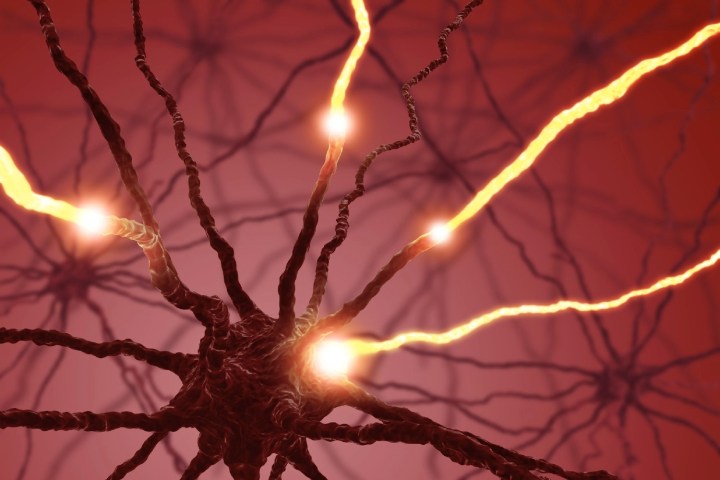
But a new research project from the National Center for Scientific Research (CNRS), the University of Bordeaux, and Norwegian information technology company Evry could take that these breakthroughs to next level — thanks to the creation of an artificial synapse on a chip.
“There are many breakthroughs from software companies that use algorithms based on artificial neural networks for pattern recognition,” Dr. Vincent Garcia, a CNRS research scientist who worked on the project, told Digital Trends. “However, as these algorithms are simulated on standard processors they require a lot of power. Developing artificial neural networks directly on a chip would make this kind of tasks available to everyone, and much more power efficient.”
Synapses in the brain function as the connections between neurons. Learning takes place when these connections are reinforced, and improved when synapses are stimulated. The newly developed electronic devices (called “memristors”) emulate the behavior of these synapses, by way of a variable resistance that depends on the history of electronic excitations they receive.
“Here we use a specific kind of memristors based on purely electronic effects,” Garcia continued. “In these devices, the active part is a ferroelectric film, which contains electric dipoles, that can be switched with an electric field. Depending on the orientation of these dipoles, the resistance is on or off. In addition, we can control configurations in which domains with up or down dipoles coexist, with intermediate voltage pulses. This gives rise to an analog device with many resistance levels. In our paper, we were able to understand how the resistance of the memristor evolves with voltage pulses and make a model based on the dynamics of ferroelectric domains.”
The result was an array of 45 such memristors which were able to learn to detect simple patterns without any assistance; something referred to as “unsupervised learning” in the machine learning community.
Now that the team is able to predict the behavior of an individual electronic synapse, the next goal is to develop neural networks on a chip that contain hundreds of these ferroelectric memristors. Once this is achieved, they will test it by connecting the neural network to an event-based camera to have a go at detecting moving objects at high-speed.
“The final goal of this project would be to integrate this bio-inspired camera in a car to assist the driver when unexpected objects or persons are crossing the road,” Garcia said.
Should all go according to plan, it may not be long before the neural networks are incorporated as a standard part of the processors found in our smartphones and other mobile devices.


